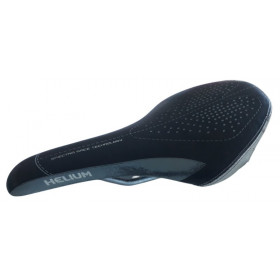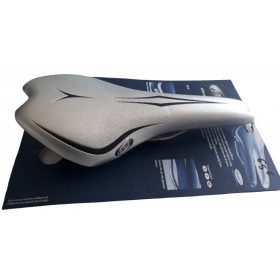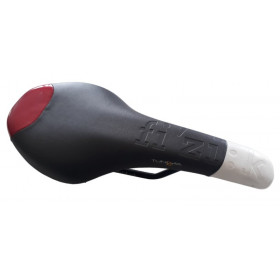-
 UsedHelium Spectra race saddle
UsedHelium Spectra race saddle- €4.99
-
 UsedRockrider saddle
UsedRockrider saddle- €4.99
-
 New product -45%BBB ultrabase saddle
New product -45%BBB ultrabase saddle- €35.74
- €64.99
-
 New product -40%Fizik Pave CX saddle manganeses rails
New product -40%Fizik Pave CX saddle manganeses rails- €47.99
- €79.99
-
 More detailsNew product -60% Out-of-StockFizik Tundra 2 black and red saddle
More detailsNew product -60% Out-of-StockFizik Tundra 2 black and red saddle- €48.00
- €119.99
Showing 1-5 of 5 item(s)
Downhill mountain biking is an extreme sport that demands both skill and durability from every component of a bike. One such essential part is the saddle, which plays a crucial role in comfort, control, and performance. In this article, we will explore the characteristics, recommendations, and advice for selecting the perfect downhill mountain bike saddle.
Characteristics of saddle for mountain bike downhill:
1. Durability:
A downhill mountain bike saddle should be able to withstand rough terrain and heavy use. High-density foam and reinforced rails are common features that increase durability. Some saddles also feature abrasion-resistant covers for added protection.2. Size and Shape:
Downhill saddles typically come in various sizes (narrow, medium, wide) and shapes (flat, cutout, or rounded). The size should be appropriate for your sit bones to ensure proper support and comfort during long descents. The shape can affect pressure distribution, with cutouts or channels designed to reduce sitting area contact and promote blood flow.
3. Flexibility:
A flexible saddle allows the rider's body to move naturally while maintaining control over the bike. Some downhill saddles feature a flexible base that adapts to the rider's movements, promoting comfort and reducing fatigue during long rides.
Recommendations for mountain bike downhill saddle :
1. Test Ride:
Whenever possible, test ride different downhill mountain bike saddles before making a purchase. This will help you determine which saddle provides the best fit, support, and comfort for your unique anatomy.
2. Research:
Look for saddles from reputable brands known for their durability and quality. Read reviews from other riders to gather insights on each saddle's performance.
3. Adjustability:
Consider a saddle with adjustable features like tilt, setback, or height. This will allow you to customize the saddle to your preferred riding position and provide optimal comfort during descents.
Advice for mountain bike downhill saddle :
1. Prioritize Comfort:
A comfortable saddle is essential for an enjoyable downhill mountain biking experience. Invest time in finding a saddle that suits your needs, as a poorly fitted saddle can lead to discomfort, pain, or even injury over time.
2. Maintain Your Saddle:
Regularly clean and lubricate the rails of your saddle to prevent corrosion and ensure smooth movement. Inspect the cover for any signs of wear and tear, replacing it as needed to maintain the saddle's overall performance and longevity.
3. Experiment:
Don't be afraid to experiment with different saddles or saddle features until you find the perfect fit for your downhill mountain biking adventures. Remember that what works best for one rider may not work as well for another, so take the time to find a saddle that suits your unique needs and preferences.
In conclusion, selecting the right downhill mountain bike saddle is crucial for comfort, control, and performance during descents. By considering durability, size and shape, flexibility, and other key factors, you can find a saddle that provides the ideal balance of support, comfort, and adaptability for your extreme biking adventures.
